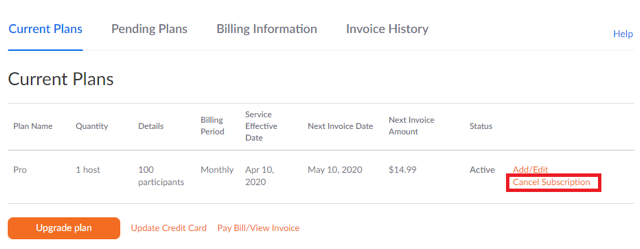When it comes to customer marketing, one of the most important metrics to track is customer retention. After all, figuring out how to keep your customers aboard ship and reduce churn rate is the linchpin of software-as-a-service (SaaS); you want to keep your customer base intact to prevent revenue loss.
In the basic sense of the word, churn refers to the loss of a customer, but often this is conflated with subscription cancellation.
However, it's essential to understand there’s a big difference between when a customer cancels their subscription and the all-too-familiar term, customer churn. By understanding the difference between the two, you can take proactive measures to prevent customer churn and improve customer retention rates.
In this article, we’re going to dissect these all-important benchmarks of customer activity and provide greater clarity into how you can tailor your customer marketing strategy around them. Namely, we’ll examine:
- What cancellation means,
- What churn means,
- The difference between the two terms,
- How you can avoid cancellations, and
- The strategies you can adopt to win back cancelled customers before they churn.
What is customer cancellation?
When an individual customer cancels their subscription it means they have actively chosen to stop paying for the product (or service) in question. They've literally clicked the 'cancel subscription' button.

They no longer desire to use your product and have taken this step to sever future ties with your organization. can usually be traced back to previous symptoms or tell-tale signs that exhibit the customer’s dissatisfaction with your product.
This could be for a variety of reasons, such as finding a better solution with one of your competitors, finding the prices of your product too high, possible product bugs affecting user experience (UX), or poor customer service. On the flip side, they could have cancelled for a more positive reason – they might simply no longer need your product or service anymore because they’ve fulfilled their original goals with your product.
It's important to note that customer cancellation is a leading indicator of customers who will eventually churn. To avoid a future lack of revenue from this customer, you need to work fast.
When a customer cancels, it means they’re actively terminating their subscription agreement with an organization. The payment won’t renew upon the next scheduled billing, but it doesn’t automatically mean a loss in revenue. That’ll occur when the next payment is usually due.

What is customer churn?
Customer churn refers to customers who've stopped paying for their subscriptions and there isn’t any revenue flowing into the organization. Churn is essentially a revenue impact.
In a nutshell, customer churn is the point where the customer’s cancelled subscription has a negative revenue impact on your business.
Of course, the responsibility of preventing customer churn shouldn’t solely fall on the customer marketing team’s shoulders. If a customer has churned because of a persistent glitch or bug with the product, that technically falls within the remit of the product development team. If the customer has found the price to be too high, whoever’s in charge of your product’s pricing ought to re-evaluate their strategy.

How to pre-empt cancellations
Of course, one of the key ways to prevent a customer from cancelling (and then eventually churning) is by focusing on customer engagement. This means proactively working with customers to ensure they are getting the most value out of your product or service. This can be achieved through a variety of methods, such as customer onboarding, training, and regular check-ins.
A water-tight customer onboarding process
Onboarding is the process of introducing new customers to your product or service. This is an essential step in the customer journey and can have a significant impact on customer retention. By providing new customers with the information and resources they need to get started, you can help ensure they have a positive experience with your product or service from the start.
Solid training
By providing customers with the skills and knowledge they need to use your product or service effectively, you can help them get the most value out of it. This can be achieved through a variety of methods, such as webinars, tutorials, and in-person training.
Regular check-ins
By checking in with customers on a regular basis, you can ensure that they are getting the most value out of your product or service. This can also help you identify any issues or challenges that customers may be facing, allowing you to take proactive measures to address them.
In addition to these strategies, it's also important to keep in mind that customer feedback is key. By regularly soliciting feedback from customers, you can get a better understanding of their needs and wants, and make adjustments.

Win-back cancelled customers before they fully churn
Thankfully, there are several strategies that customer marketers can use to win back customers who have cancelled their subscriptions before they fully churn.
Here are a few:
1. Understand the reason for the cancellation
The first step in winning back a cancelled customer is to understand why they cancelled their subscription. This can be done by reaching out to the customer and asking for their feedback. By understanding the reason for cancellation, customer marketers can tailor their approach to address the specific issues that led to the cancellation.
2. Offer a special promotion or discount
If a customer has cancelled their subscription due to cost, a customer marketer may be able to win them back by offering a special promotion or discount. This can be a great way to show the customer that the company values their business and is willing to make concessions to keep them as a customer.
3. Address any pain points
If a customer has cancelled their subscription due to poor customer experience, a customer marketer should work to address the pain points that led to the cancellation. This can be done by providing additional support, resources, or training to help the customer get more value out of the product or service.
Follow-up regularly: Even if a customer has cancelled their subscription, it's crucial that customer marketers continue following up with them on a regular basis. This can help to keep the company top-of-mind and show the customer that the company is still interested in their business.
4. Personalize the approach
A personalized approach to winning back a customer is more likely to be successful. Custome marketers should try to understand the unique needs, pain points, and preferences of the customer and tailor their approach accordingly.
5. Offer a free trial
If a customer has cancelled their subscription due to lack of engagement or not being able to fully see the value of the product or service, you can offer a free trial or demo to show the customer the full capabilities of the product or service and how it can benefit them.
6. Show empathy
Showing empathy and understanding the customer's situation can go a long way in winning back a cancelled customer. By acknowledging their concerns and frustrations, you can create a sense of trust and goodwill with the customer, which may make them more likely to re-subscribe.
Ultimately, winning back a cancelled customer requires a combination of understanding the reason for cancellation and being proactive in addressing the customer's specific needs and concerns. By following these strategies, customer marketers can increase the chances of winning back cancelled customers and improving customer retention.

To wrap things up…
Understanding the difference between a customer cancelling their subscription and customer churn is vital in order to take proactive measures to prevent customer churn and improve customer retention.
The strategies used to prevent cancellation from snowballing into churn will depend on the type of customer, whether it’s an individual customer or a larger business client, but largely there’s a window between the time of cancellation and the point of churn that customer marketers can use to win back the customer.
In conclusion, customer churn is an essential metric for any company to track, and depending on the time frame you’re working with (what point of the month, or year, the customer cancels), full churn can be prevented.
Like this article?
If this article piqued your interest, we offer exclusive membership plans tailored to whatever your budget and professional development needs. For more information, have a browse below. 👇





